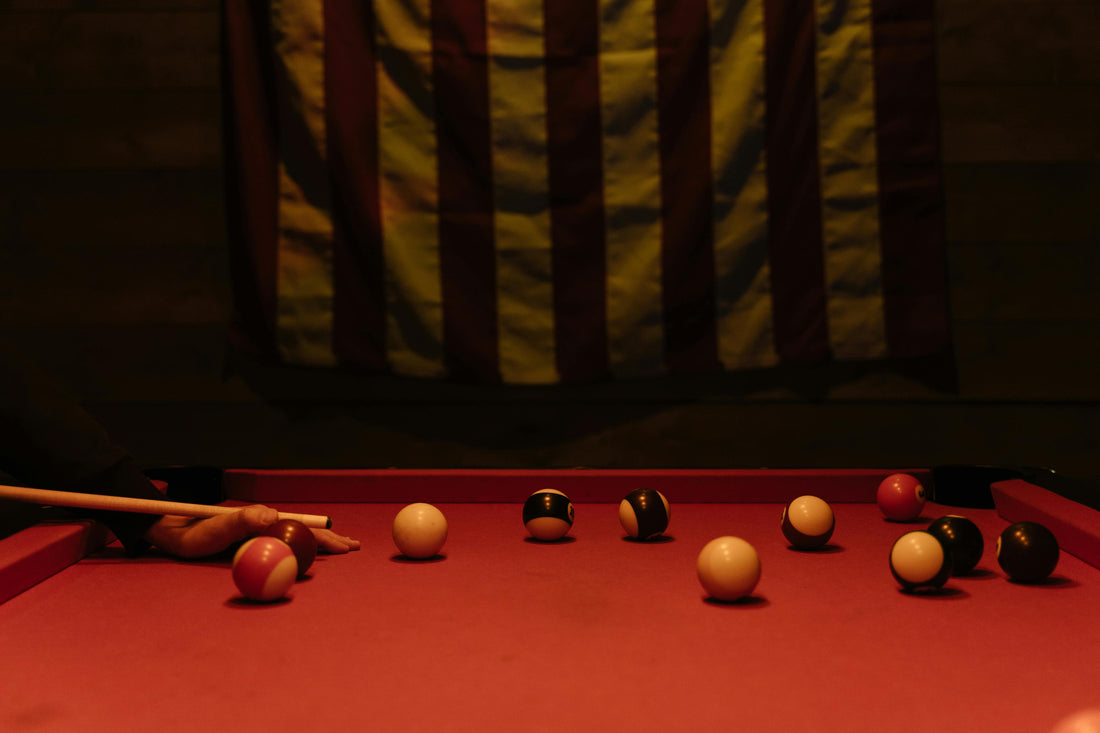A cue stick may look simple at first glance, but it's composed of several key components that work together to impact your shot feel, energy transfer, and overall stability. Among these, the ferrule, tip, and joint play a critical role. Whether you're a beginner or a seasoned player, understanding these parts can significantly improve your performance and help you make better equipment choices.
This article breaks down these three essential sections from the perspective of structure, material, function, and practical recommendations — so you can truly understand the cue you’re holding.
1. Ferrule: The First Step in Power Transfer and Control
What is a Ferrule?
The ferrule sits at the very front of the cue, directly beneath the tip. It's typically made from high-strength synthetic materials such as plastic, carbon fiber, or resin. Its primary role is to hold the tip in place and absorb the impact during each shot.
Functions of the Ferrule:
-
Absorbs vibrations from ball contact and protects both tip and shaft
-
Influences the efficiency of spin transfer
-
Affects tip stability and longevity
Material Differences:
| Material | Features | Recommended For |
|---|---|---|
| Plastic/ABS | Low cost, softer feel | Casual beginners |
| Resin/Phenolic | Strong, clear feedback | Intermediate players |
| Carbon Fiber | Ultra-light, precise, fast rebound | Technical players, high-end cues |
BIZU Tip:
High-quality carbon fiber ferrules offer nearly zero energy loss, ideal for players seeking control and precision.
2. Tip: The Only Part That Touches the Cue Ball
What is a Tip?
The tip is the foremost part of the cue that makes direct contact with the cue ball. It's generally made from layered compressed leather or advanced composite materials and is crucial for spin, control, and feel.
Tip Hardness Types:
| Type | Features | Playing Style |
|---|---|---|
| Soft | High friction, excellent spin, harder to control | Players who prefer spin and finesse |
| Medium | Balanced, suitable for most styles | All-around players |
| Hard | Direct energy transfer, less spin, durable | Power hitters, precision shooters |
Key Factors Affecting Tip Performance:
-
Size (diameter) affects the contact surface
-
Wear and tear changes spin consistency
-
Bonding quality determines if the tip will fall off easily
BIZU Tip:
Carbon fiber shafts pair best with medium to hard tips to fully utilize their low-deflection characteristics and maintain shot consistency.
3. Joint: The Critical Connection Point for Feedback and Power Transmission
What is a Cue Joint?
The joint connects the forearm (upper half) and butt (lower half) of the cue. It includes two parts: the joint pin (male) and the joint collar (female).
Common Joint Materials:
| Material | Features | Recommended For |
|---|---|---|
| Stainless Steel | Heavier, stable, very durable | Professional players |
| Aluminum | Lightweight, corrosion-resistant | Intermediate/advanced users |
| Carbon Fiber | Ultra-light, clean feedback | High-end carbon fiber cues |
| Wood | Soft energy transfer, classic feel | Traditional wood cue users |
Popular Joint Types:
-
3/8 x 10: Excellent stability and smooth energy flow, common in American cues
-
5/16 x 14 / 18: Offers rigid, solid feedback
-
Uni-Loc Quick Release: Fast setup with precise alignment
-
Radial Pin: Dense threading for a secure fit, common in custom cues
BIZU Tip:
All BIZU carbon fiber cues feature lightweight precision joints for consistent feedback and a tight, secure fit — ideal for professionals or players who require top-tier response.
4. Interplay Between Cue Components
-
The tip controls spin and is the only part that touches the cue ball
-
The ferrule transfers the energy and direction from the tip to the shaft
-
The joint determines how smoothly energy flows through the cue and whether the shot feels unified or disconnected
A great cue is not defined by a single superior part, but by how well every component is matched and optimized. This synergy is what makes a cue truly exceptional.
Final Thoughts: The More You Know, the Better You Choose
Whether you're buying your first cue or upgrading your current one, understanding the structure and function of the ferrule, tip, and joint will help you choose equipment that matches your playing style and needs.
Learn More About Carbon Fiber Cues
BIZU specializes in designing and manufacturing carbon fiber cue sticks, combining cutting-edge technology with real-world performance. If you’re looking for a low-maintenance, high-response, and ultra-stable cue, visit our website to explore more:
Visit the BIZU Official Website – bizubilliards.com


